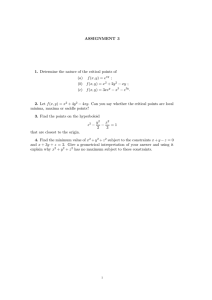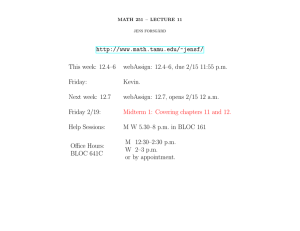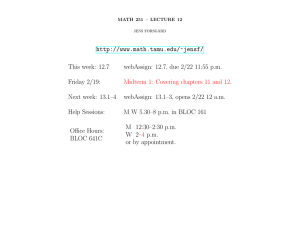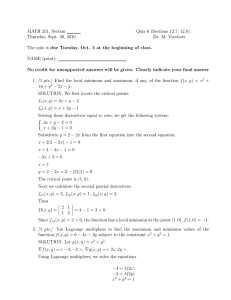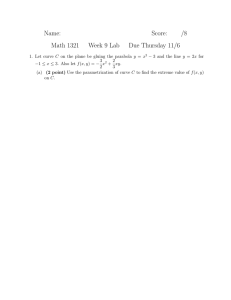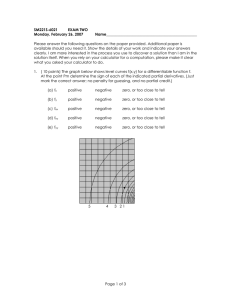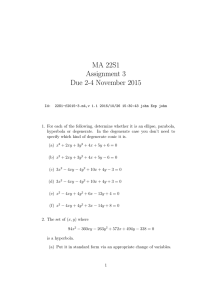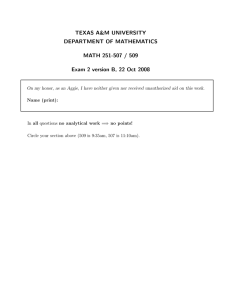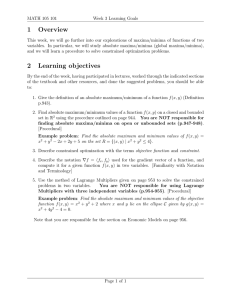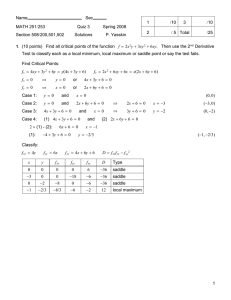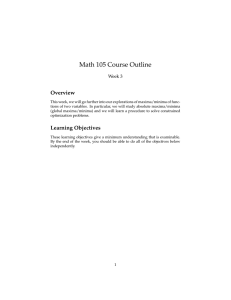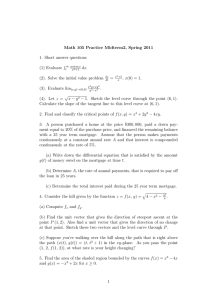TEXAS A&M UNIVERSITY DEPARTMENT OF MATHEMATICS MATH 251-508
advertisement
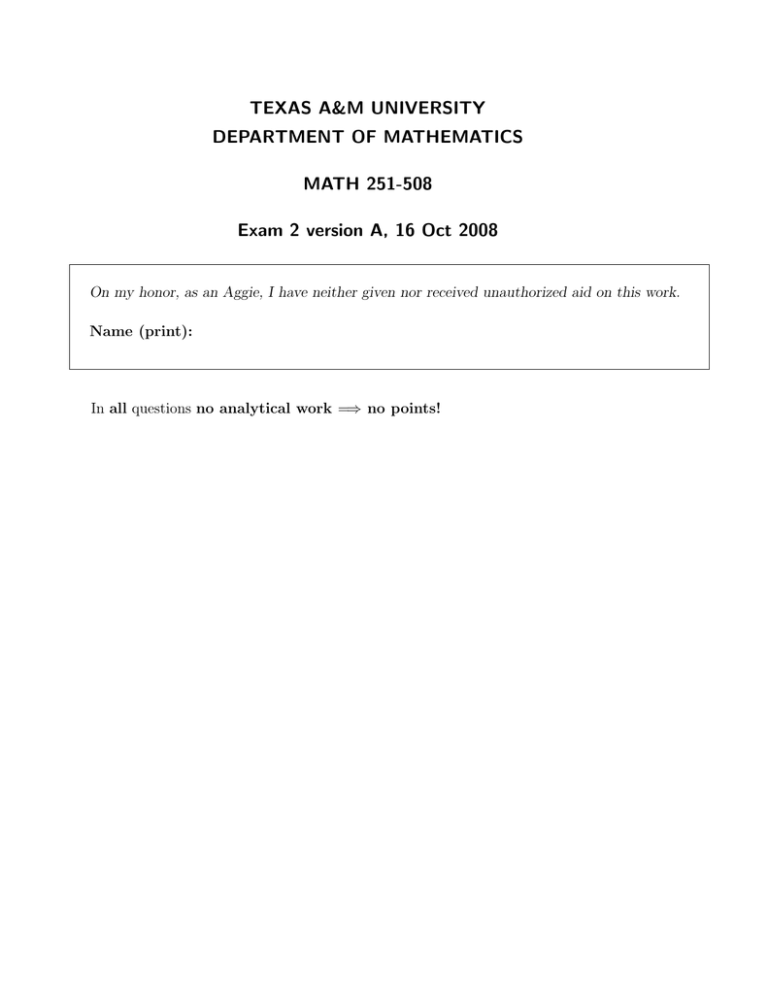
TEXAS A&M UNIVERSITY DEPARTMENT OF MATHEMATICS MATH 251-508 Exam 2 version A, 16 Oct 2008 On my honor, as an Aggie, I have neither given nor received unauthorized aid on this work. Name (print): In all questions no analytical work =⇒ no points! 1. True or false? Give reasons for your answer! (a) There is a function f such that fx = yex and fy = −ex . (b) If u is perpendicular to the level curve at the point (0, 0) then Du f (0, 0) = ∇f . (c) If f (x, y) has two local maxima, it must have a local minimum. (d) If f has a local minimum at (a, b) and f is differentiable at (a, b) then fx (a, b) = fy (a, b) = 0. (e) Any function of the form z = f (x + at) + g(x − at) is a solution of the wave equation 2 ∂ 2z 2∂ z = a . ∂t2 ∂x2 2. Find the local minima, maxima and saddle points of the function f (x, y) = x4 − 4xy + 2y 2 . 3. Find the absolute maximum and minimum values of f (x, y) = x2 y − 2x2 − 4xy + 8x + 3y in the rectangular region with the vertices (0, 0), (0, 3), (4, 3) and (4, 0). 4. Use Lagrange multipliers to find the shortest distance between the points on the curve xy 2 = 2 (x > 0) and the origin. 5. (Bonus question +10%) Prove that in the second derivative test for f (x, y) the condition D>0 and fxx (a, b) > 0 D>0 and fyy (a, b) > 0. is equivalent to the condition Points: /20
